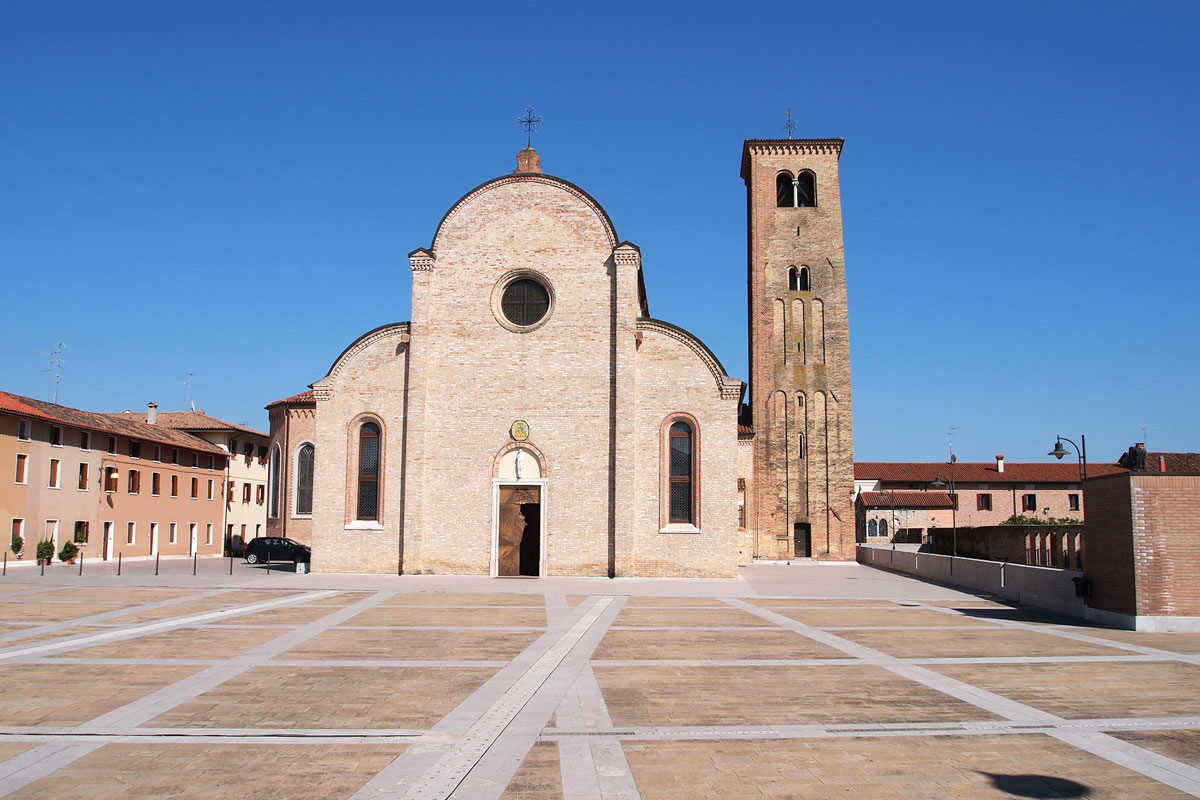
A few kilometres from the coast of Friuli and the Veneto, the town of Concordia Sagittaria stands on the banks of the River Lemene. This small town was once one of the most important cities in the Roman Empire.
Founded as a military outpost to protect the borders of the empire from barbarian invasions, it gradually took on increasing importance thanks in part to its geographical position and the presence of a factory that made arrows (called sagitte, the word which gave the town its name) Here, like in the rest of the Roman Empire, Christianity began to take root. The ruins of Concordia Cristiana can be admired today by visiting the important archaeological site that has emerged at the base of the present-day cathedral.
A stroll in Concordia Sagittaria surely will delight those who love architecture, culture and Italian history.
How to reach Concordia Sagittaria from Lignano Sabbiadoro
By car

Take state road S.R. 354 towards Latisana. Just before reaching Paludo, turn left on Via Mauro and continue down the road that runs along the banks of the River Tagliamento until you reach the traffic signal. Turn left down SS14 heading towards Portogruaro. Take the interchange that leads to Viale Trieste. Continue on until you reach the centre of Portogruaro. At the third roundabout, turn left on Borgo Sant’Agnese and then, shortly after, turn left again on Via Reghena. In just a few minutes, you will then be facing the Cathedral of Concordia Sagittaria.
Travel time: 35 minutes
6 things to see and do in and Concordia Sagittaria
1. Visit an ancient archaeological site
At the foot of the Cathedral of Concordia Sagittaria, which stands in the heart of the old town, you can visit an interesting Roman and early Christian archaeological site.
You can get a view of the whole site from above, looking down from the walkway next to the Cathedral, but only entering the actual site do you get a true chance to step back in time. You’ll be surrounded by ancient mosaics, the ruins of historical basilicas and paved Roman roads where the grooves left by carts can still be seen.
The site is open Fridays from 8:30 am to 1:30 pm and Saturdays and Sundays from 2:30 to 7:30 pm.
In addition, as you explore the town, you can visit other archaeological areas, such as the public baths and the city walls, the Roman bridge of Via S. Pietro and the Roman home and wells in Via dei Pozzi Romani and Parco dei Signini.
2. Visit the Cathedral
Dedicated to Saint Stephen, the imposing Cathedral of Concordia Sagittaria stands out in the centre of the town.
Starting from the primitive Basilica Apostolorum, the cathedral’s origins probably go back to the late 4th century CE. From then on, the building underwent numerous changes: in 452 it was destroyed by a fire during a Hun invasion, immediately rebuilt, only to be destroyed once again in 589 by a flood.
The church was rebuilt and expanded over the years, up until the early 20th century, when the new facade was added, echoing that of the church of S. Zaccaria in Venice, and the chapel dedicated to the martyrs was erected, with a small crypt to hold relics.
3. Visit the Civic Museum
The Civic Museum holds the objects found during the excavation of the early Christian archaeological site in Concordia, and those that still come to light today in the city or its surroundings, often found on farms or construction sites. The museum is located just behind the cathedral, on the ground floor of the city library.
The Rufino Turranio Cultural Association organizes tours and workshops to explore the town’s history, including the local archaeological sites, the Civic Museum and the nearby Concordia Archaeological Museum in Portogruaro.
4. Take a boat ride on the River Lemene and the canals of the Veneto
The entire area surrounding Concordia Sagittaria is crossed by small to medium navigable waterways. What’s more, the sea and Caorle, Brussa beach and the canal system called the litoranea Veneta.
From here, you can set out on a boat ride to discover the waterways and lagoon of the eastern part of the Veneto, diving into the natural landscapes and traditions of the area. You may even catch sight of birds and other animals, admire the changing of the seasons, discover traditional casoni (the old lagoon houses of fishermen), or have a culinary adventure tasting local dishes.
5. Attend the Gara dee Batee regatta
As small as Concordia Sagittaria may be, it is home to many events that are firmly rooted in local traditions. One of the most important is the Gara dee Batee.
This regatta is usually held on the last Sunday of September along the River Lemene, re-enacting the historical races between fisherman using the unique rowing technique commonly found in the Veneto (vogando alla veneta). It is usually held at the same time as the fish festival, with outdoor stands selling local fish specialities.
6. Near Concordia Sagittaria: visit Portogruaro
The town of Portogruaro is very close by, just a few kilometres away, and can be easily reached by bicycle or on foot via a nice bicycle/walking path that runs along the river.
Portogruaro and its medieval old town surprise visitors with Venetian-style buildings, large porticoes and picturesque views of the River Lemene.
More information about what to do in Portogruaro can be found here.
